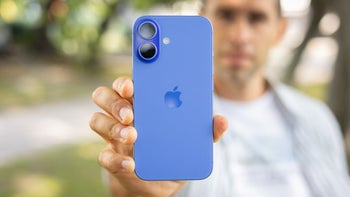Experts explain why we won't see a foldable Samsung phone anytime soon

Ah, the foldable Samsung phone - rumors about this mystical gadget have been circulating for ages, and this year is no exception.
The first batch of speculations came in January, suggesting that the bendable handset could be ready for a commercial launch as soon as Q3 2017. Later, other "unnamed industry sources" deemed the previously mentioned release schedule as too optimistic, and predicted that device will actually see the light of day in the first half of 2018, while subsequent reports from South Korea indicated that a prototype of the phone was heading to MWC in order to be displayed in a private exhibition room.
However, as winter turned to spring, more and more experts began to rally behind the notion that we won't see a foldable phone from Samsung even in 2018. With all of this uncertainty and delays, one might wonder if there's even such a project goingon at Samsung to begin with.
Fortunately, Korean media outlet The Investor managed to interview four experts in the field display and OLED technology in the quest of discovering the reason behind these supposed delays. Kyunghee University professor Jang Jin, Samsung Display researcher Kim Tae-woong, IHS analyst Jerry Kang, and UBI Research senior analyst Yi Choong-hoon shared their thoughts on what's holding up Samsung's foldable project.
For Mr. Yi, it's a question of priorities - the tech giant is currently more focused on enhancing its full-screen technology for future Galaxy S flagships, as its major rival Apple is also planning to introduce an OLED iPhone for this year. Yi also predicts that a bendable Samsung handset will hit the shelves in 2019 at the earliest.
When asked about the biggest challenges currently standing in the way of Samsung, the experts replied:
Jang: I would say the display technology is still in development. A more advanced encapsulation technology should be developed to better protect display substrates from oxygen and water vapor.
Yi: Durability is the key issue. All parts, including battery, shouldn’t be damaged by continual folding and unfolding of the phone. Samsung engineers are reportedly testing the prototype 100,000 times a day.
Kim: Detachment between panel layers and adhesives, also known as decoupling, is another tricky issue to solve.
User experience is another major area of concern, according to IHS analyst Jerry Kang. The images leaked up to this point indicate that such devices are difficult to use with a single hand, while the hinge that connects the two screen panels also looks susceptible to being broken.
Even if the above issues are solved, there is one more reason which might be the main factor behind Samsung's reluctance to commit more resources to the project - marketability. Consumer interest for this type of devices is yet to be gauged, and this issue will continue to exist until a major manufacturer finally decides to release a foldable phone on the market.
source: The Investor











Things that are NOT allowed: